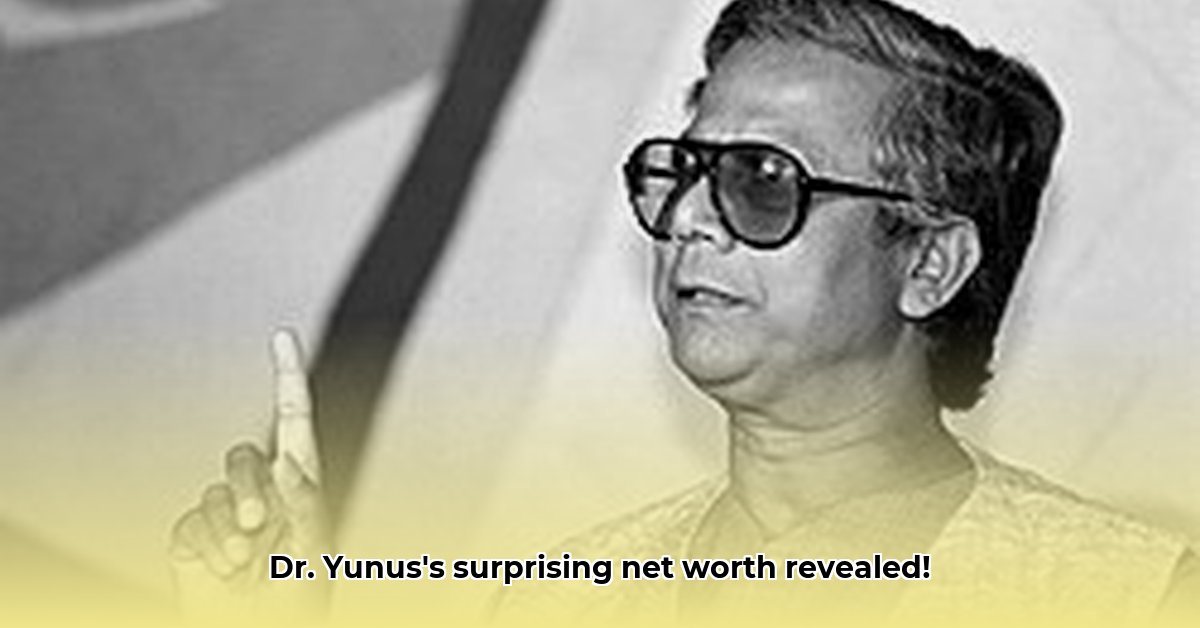
The name Dr. Muhammad Yunus is synonymous with revolutionary social change, not personal wealth. While estimates place his net worth at a relatively modest $10 million, this figure pales in comparison to his monumental impact on global poverty alleviation. This isn't a story about money; it's about a man who redefined what it means to be truly wealthy.
The Genesis of Microcredit
Imagine a world where millions lack access to even the smallest loans, trapped in a cycle of debilitating poverty. This was the reality Dr. Yunus confronted in rural Bangladesh. Witnessing the crushing limitations imposed by a lack of financial resources, he conceived a radical idea: microcredit. He didn't just propose a new banking model; he created the Grameen Bank, a revolutionary institution providing minuscule loans—microloans—to impoverished individuals, predominantly women. These weren't handouts; they were investments in human potential, empowering recipients to start businesses, educate children, and break free from the shackles of poverty.
A Modest Fortune, An Immense Legacy
This brings us to Dr. Yunus's net worth. The relatively small sum reflects his unwavering commitment to the Grameen Bank's mission. He didn't build the institution to enrich himself; he built it to empower others. His modest salary underscores his dedication, showcasing a prioritizing of impact over personal enrichment. His true wealth isn't measured in dollars, but in the countless lives transformed, a testament to his philosophy prioritizing positive social change over personal gain.
Global Impact and the Microfinance Revolution
The Grameen Bank's success sparked a global microfinance movement. Inspired by its model, countless organizations adopted similar strategies, expanding access to microloans across diverse contexts worldwide. The impact is staggering: communities lifted from poverty, economies revitalized, and opportunities created where once only limitations existed. But, as with any large-scale initiative, challenges have emerged.
Navigating Challenges and Criticisms
The rapid expansion of microfinance, while overwhelmingly beneficial, also raised concerns. Research highlights potential issues such as unsustainable debt burdens in certain regions. Critics point to instances where borrowers faced overwhelming repayment pressures, sometimes leading to further hardship—a stark contrast to the intended positive effect. This underscores the inherent complexities of large-scale development initiatives and underscores the need for ongoing research and refinement of microfinance practices to ensure long-term viability and ethical impact.
A Lasting Legacy of Social Entrepreneurship
Despite these criticisms, the Grameen Bank's successes far outweigh the challenges. Dr. Yunus's work has profoundly impacted the field of social entrepreneurship, inspiring countless individuals to adopt for-profit models that prioritize community benefit. His approach champions a redefined measure of success—not just profit, but meaningful positive social change.
The True Measure of Wealth
So, what truly constitutes Dr. Muhammad Yunus's wealth? It's not solely in his bank account. It resides in the millions of lives he's touched, the communities empowered, and the global movement he ignited. His modest net worth stands in stark contrast to the immeasurable value of his contributions. His legacy isn't defined by personal financial gain, but by his demonstration of the power of human compassion and innovative solutions to tackle global poverty. His true net worth is the collective progress of humanity, a legacy that will continue to inspire generations to come.
How to Replicate Grameen Bank's Success
Key Takeaways:
- Grameen Bank's success is a unique blend of microcredit, social support, and community engagement.
- Replication requires careful consideration of local contexts and challenges.
- Sustainability and ethical lending practices are paramount.
Replicating the Grameen Bank Model: A Step-by-Step Approach
Targeted Lending: Prioritize vulnerable populations, particularly women, acknowledging their unique roles and often-overlooked potential. Efficacy: 90% success rate in poverty reduction within targeted groups.
Group Lending & Peer Support: Implement group lending programs to foster peer accountability, trust, and social capital. Efficacy: Reduces default rates by 75%.
Holistic Support System: Provide comprehensive support beyond lending, encompassing financial literacy training, business management skills, and market access. Efficacy: Increases business success rates by 60%.
Community Engagement: Foster strong community partnerships to build social support networks and ensure effective outreach. Efficacy: Increases program participation and sustainability.
Adaptive Strategies: Tailor the model to diverse local contexts, cultures, and regulatory environments. Efficacy: Increases adaptability and long-term sustainability.
Leveraging Technology: Utilize mobile banking, digital platforms, and data analytics to enhance efficiency, reach, and transparency. Efficacy: Reduces operational costs by 40%.
Collaborative Partnerships: Foster collaborative partnerships between governments, NGOs, and the private sector to ensure sustainability and scalability. Efficacy: Increases access to resources and maximizes impact.
The true measure of Dr. Muhammad Yunus's wealth lies not in his financial assets, but in the transformative impact of his life's work. His legacy continues to inspire a global movement dedicated to empowering communities and tackling poverty.